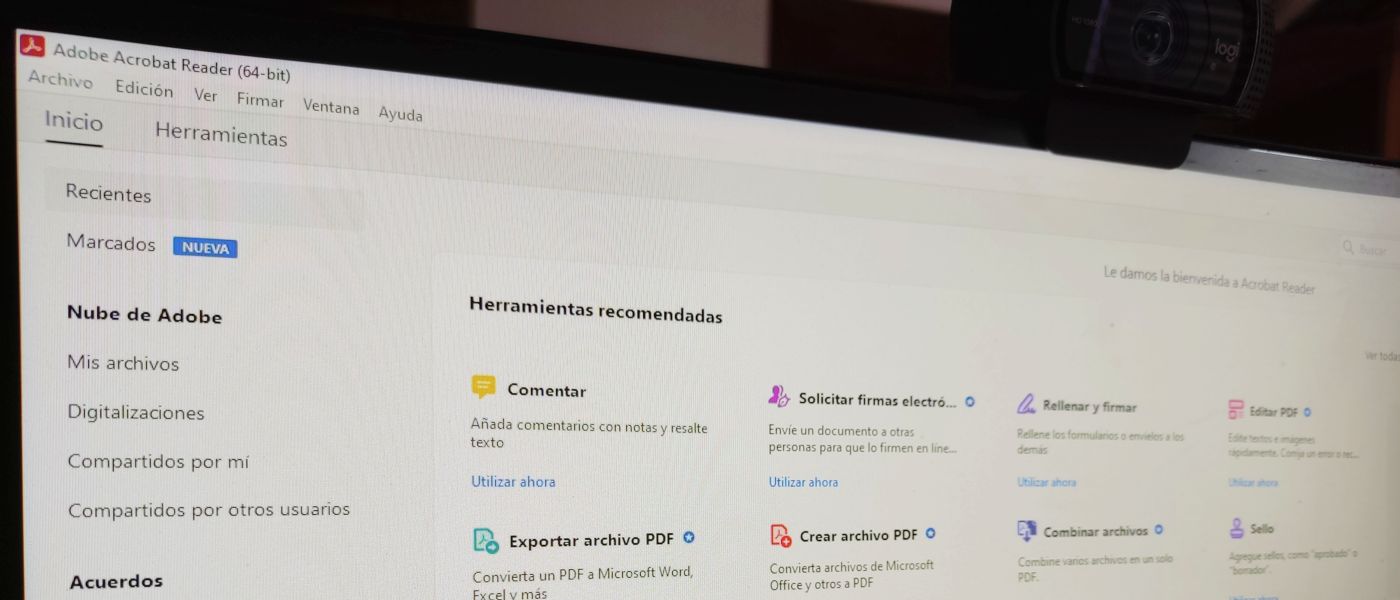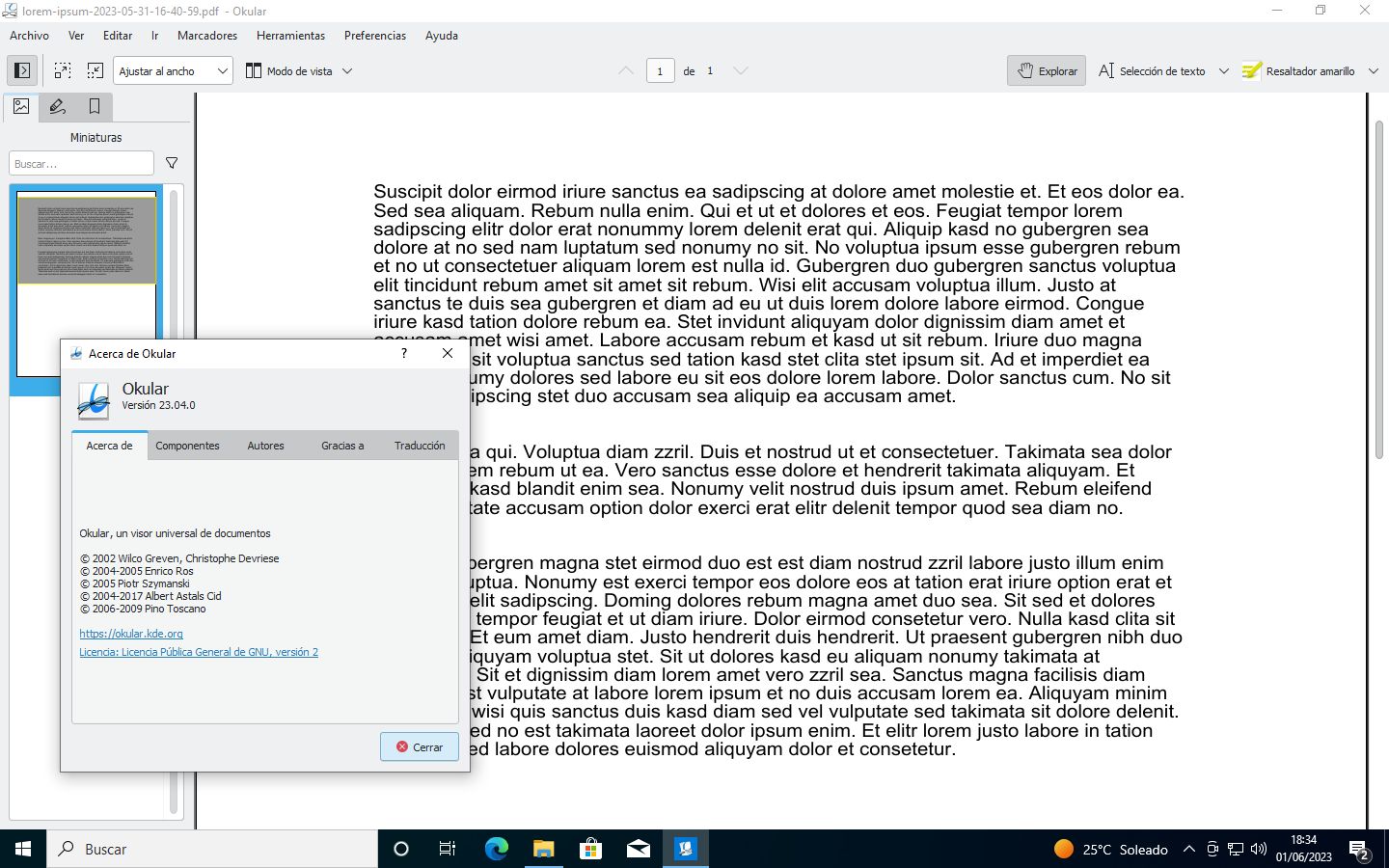A bit of PDF history and 4 alternatives to Acrobat Reader
- June 2, 2023
- 0
Acrobat Reader Currently, it is still quite a popular application when it comes to opening PDF files, despite having a very bad reputation for many years due to
Acrobat Reader Currently, it is still quite a popular application when it comes to opening PDF files, despite having a very bad reputation for many years due to

Acrobat Reader Currently, it is still quite a popular application when it comes to opening PDF files, despite having a very bad reputation for many years due to aspects such as resource consumption and some security issues that accompany the application to this day. Its popularity as a PDF reader has a lot of historical heritage, as Adobe is the inventor of this document format.
File format PDF was created by Adobe in 1992 and made available for free the following year. The company’s intention was to develop something that would allow documents with text and images to be presented in a way that could be viewed regardless of the application software, hardware and operating system. Despite being made available for free, PDF was fully published as proprietary software until 2008, the year Adobe decided to convert it to the ISO standard.
Publishing PDF as a standard allows anyone to implement support for this file format, both in proprietary and free applications, but Adobe initially reserved some letters that some didn’t like. PDF version 1.7, which was the sixth edition of the specification that became ISO 32000-1, has proprietary, non-standard parts defined by Adobe such as XML Forms Architecture (XFA) and JavaScript extensions for Acrobat.
The fact that PDF was not a fully open standard did not please many, so Adobe is improving the standard so that it does not have proprietary components. As a result, in 2020, version 2.0 of the specification was published with clarifications, corrections and critical updates to normative references to remove proprietary components.
As I explained earlier, PDF has been the standard specification for documents for years, while Acrobat Reader, formerly known as Adobe Reader, is one of the many applications that exist to reproduce said file format.
The standard edition of Acrobat Reader is distributed as a free proprietary application, but there is also Adobe Acrobat Pro DC, which is paid for and provides editing and creation of PDF files as well as conversion to Microsoft Word and Excel formats as additional features. The free version, on the other hand, allows you to view, print, and comment on PDF documents.

Although Acrobat Reader is well presented today, it received and continues to receive a lot of criticism mainly for two reasons. The first is the large number of discovered security errors, which may have contributed to the popularity of the application and its wide use in companies. It is strange to see that in this sense Acrobat Reader shared the glory with another Adobe product that was widely criticized in its time, Flash, which is now discontinued, at least in its end-user versions.
The second reason why Acrobat Reader is widely criticized is its consumption of resources, a circumstance that has worsened due to the appearance of competitors that have been somewhat more efficient in this regard. Over the years, viewers of various profiles have emerged which can be better adapted to the way the user deals with documents in this format, and recently the use of the web browser itself has become widespread (Chromium, Google Chrome, Microsoft Edge and Mozilla Firefox are worthwhile), saving the installation of a dedicated application.
What I’m going to share next is far from a panacea, but it’s a useful tip for those people who are tied to Acrobat Reader under any circumstances.
The first and logical thing is keep the app up to date to get the latest patches that fix bugs and security issues. This procedure needs to be done not only with Acrobat Reader, but with all the software that is present on the computer, including the operating system and drivers.
However, coming back to the topic at hand, in the wild world of the Internet there are many malicious PDF documents, the opening of which can lead to catastrophic consequences, and here we have to count not only files of dubious origin, but also very well-achieved fakes or scams and even legitimate sources, which have been hacked to distribute malicious modifications to the content they provide. In short, even the most careful user is prone to falling.

Another thing the user can do is the following procedure when creating Acrobat Reader for Windows: Edit > Preferences > JavaScript. The default security settings attempt to load only unprivileged, trusted JavaScript code by default, but you can always take the more radical step of disabling JavaScript support entirelyif the use of said measure is feasible.
Since Acrobat Reader is not to everyone’s taste and gives reason to distrust it, it does not hurt to mention some alternatives that are able to replace the Adobe application for most users.
is it him KDE project document viewer, is thus known mainly among Linux users and is free software, as its source code is published under the GPL license, which gives it a great advantage in terms of transparency. It is capable of opening PDF, ePub, PostScript, ComicBook, and Microsoft Compiled HTML Help (CHM) files, among other document and image formats, and also has a compilation for Windows available from the Microsoft Store.
At the feature level, it supports annotations and the use of signatures, and for many it is the best exponent among those published as free software, so its use among Linux users goes beyond the KDE Plasma desktop.

Maybe the most popular example when looking for alternatives to Acrobat Reader. Developed by Foxit Software, a Chinese company, this application is considered by many to be the best competitor to Adobe software. It offers cross-platform support for Windows, MacOS, Linux, iOS, Android and the web, but is proprietary. It has highlighting, annotation and signature support, among many other features.

There are many who have decided to stop using a special application for opening PDF documents using a web browser. Both Google Chrome (and any Chromium browser) and Firefox can open PDF files years, but while it’s a way to stop using an app in case of basic use, it’s far from the easiest if we stay with resource consumption.

Another very interesting alternative to Acrobat Reader that claims to be lightweight, free and spyware-free. Don’t be fooled though, because PDF24 Creator is actually a set of interesting ones features like PDF creation, compression, merging and conversion, plus OCR and electronic signature tools. Of course, it only works on Windows so far, and the design of its user interface may seem a little outdated to some.

Acrobat Reader is an application that, despite not receiving as much media attention in recent years (perhaps due to a decline in its use and popularity), is still controversial, especially when it comes to its security flaws.
Fortunately, most users use PDF files fairly basic, so you just need to open them. This has led to the use of web browsers as a means of opening documents in the above format, although there are also many very competent alternatives to Adobe.
Source: Muy Computer
Donald Salinas is an experienced automobile journalist and writer for Div Bracket. He brings his readers the latest news and developments from the world of automobiles, offering a unique and knowledgeable perspective on the latest trends and innovations in the automotive industry.